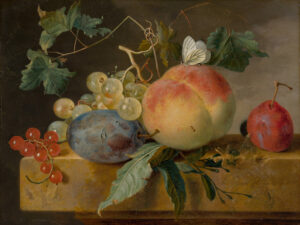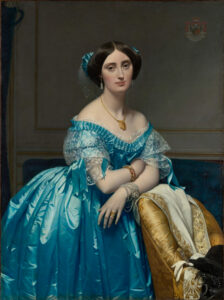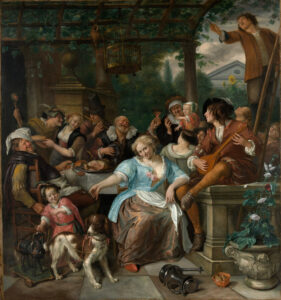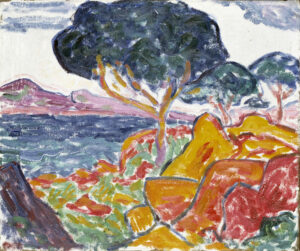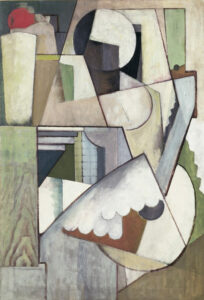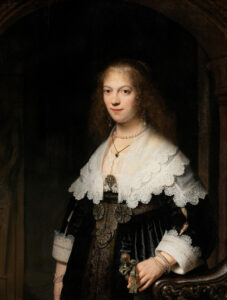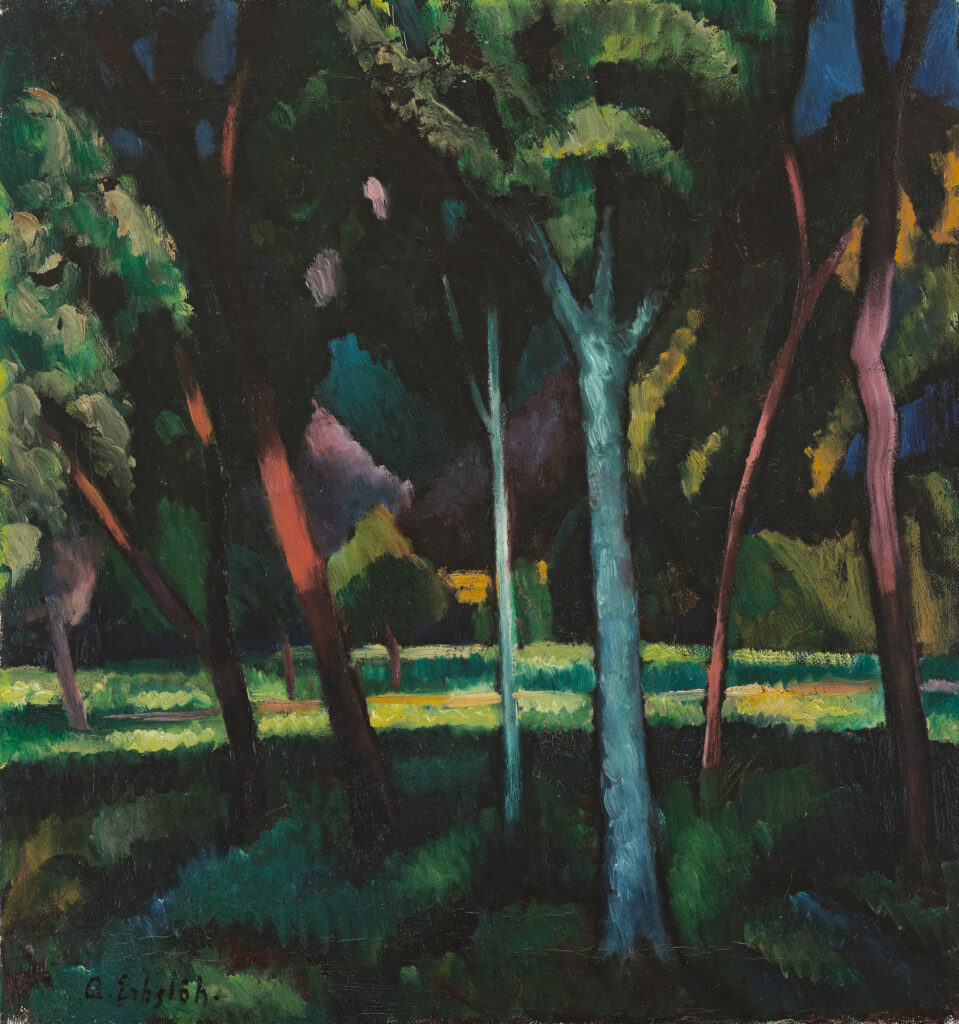
Summer Evening (c. 1911) testifies to Adolf Erbslöh’s evolution toward synthetic Expressionism.
The artist transposes a familiar landscape into a bold colorist vision dominated by vivid chromatic contrasts. The tree trunks, treated as vertical bands of orange, pink, and turquoise, stand out against dense foliage rendered through dark green impastos, creating a hypnotic visual rhythm.
The technique reveals the influence of Fauvism: pure colors applied directly, simplified forms, and expressiveness taking precedence over naturalist observation. The horizon is structured in horizontal bands evoking the raking light of evening. This synthetic approach transforms the sensible perception of the motif into an autonomous pictorial construction, where each chromatic element participates in the general harmony. The work perfectly illustrates the transition from late Impressionism to nascent German Expressionism, characterized by a progressive liberation of color and increasing stylization of forms.
Further information
- Adolf Erbslöh, Summer Evening, c. 1911
- oil on canvas, 49 cm x 46 cm
- Städtische Galerie im Lenbachhaus und Kunstbau Munich
- https://www.lenbachhaus.de/en/digital/collection-online/detail/sommerabend-30031384
Adolf Erbslöh (1881-1947) ranks among the unrecognized pioneers of German Expressionism. Born in New York to German parents, he grew up in Barmen before training in Karlsruhe then Munich, where he frequented avant-garde artistic circles. Co-founder in 1909 of the Neue Künstlervereinigung München alongside Kandinsky and Jawlensky, he participated in Munich’s aesthetic renewal. His painting, initially marked by late Impressionism, gradually evolved toward moderate Expressionism. Unlike his more radical contemporaries, Erbslöh maintained a close link with representation, developing a personal style blending direct observation and expressive stylization. An influential teacher, he trained an entire generation of German artists.

